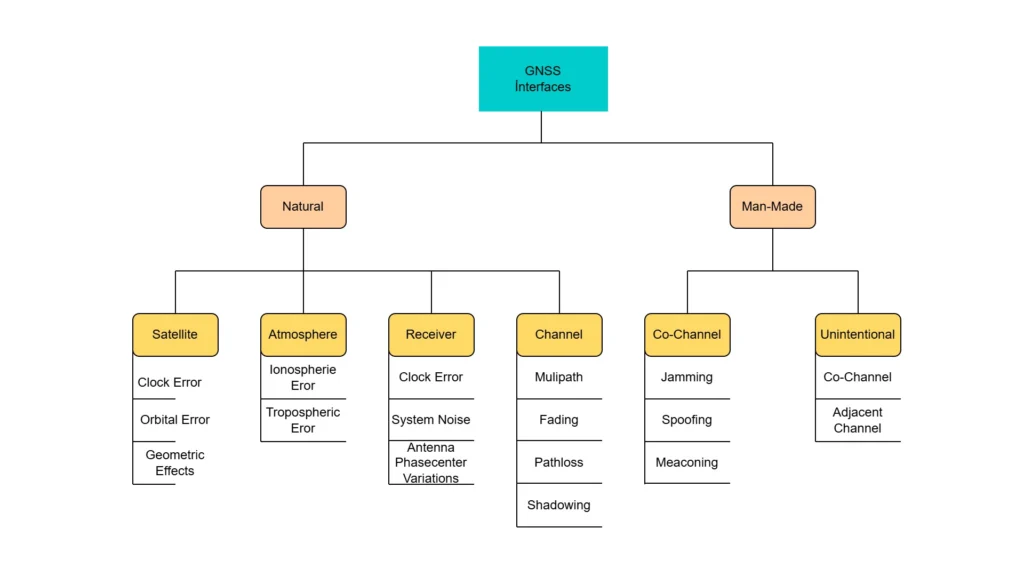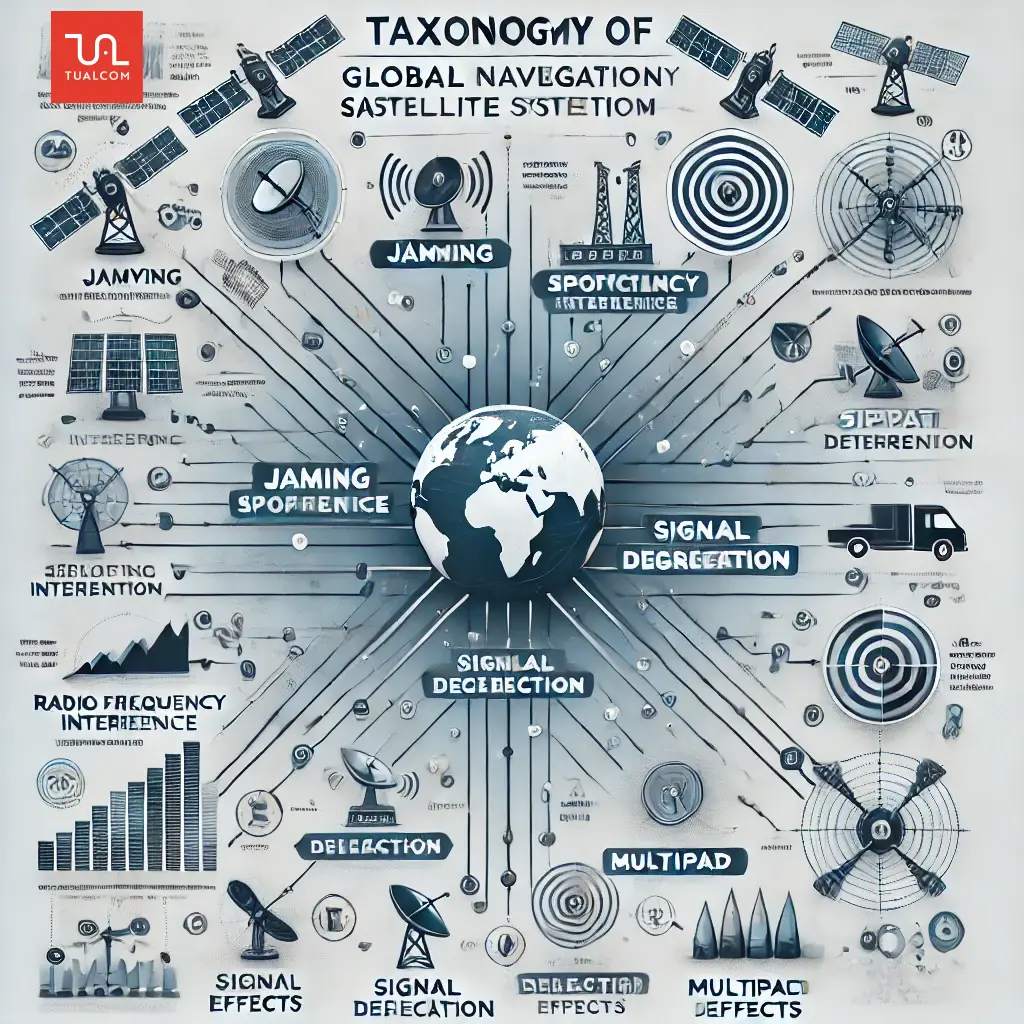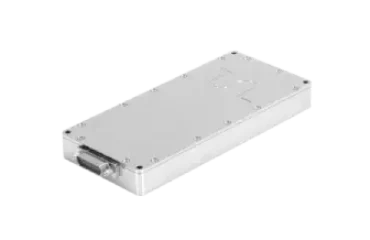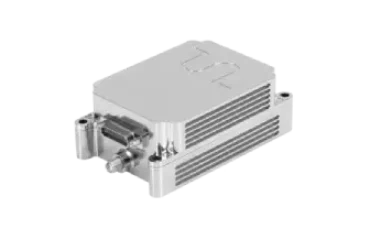Space and Defense research is the main driving force behind today’s technology used in daily-life. Originally proposed to pinpoint submarine locations back in the 1960’s, the Global Positioning System (GPS) has now evolved to provide precise position and timing information with global satellite constellations put in space specifically for this purpose with a more general name i.e., Global Satellite Navigation System (GNSS). Although still in the heart of most mission-critical applications within the military field, GNSS’s use in non-military safety-critical and liability-critical systems has made its continuous and uninterrupted presence more important than ever.
In its 2022 report, the European Union Agency for the Space Programme (EUSPA) identifies 16 different non-military application fields ranging from Agriculture to Energy and Finance, that strongly rely on sustained GNSS operation and estimated that there are 6.5 billion GNSS receiver installed devices in 2021 around the Globe which is expected to rise to more than 10.5 billion by 2030 [1]. As the number of devices with GNSS receivers and reliance on GNSS grow steadily, making it resilient against intentional or unintentional interference and sustaining its availability has become a priority.
In this report we identify techniques for GNSS jamming and explain how jamming can be mitigated.
GNSS Jamming
Imagine that you are in a room across from a friend holding a conversation. Suddenly, someone turns on the stereo and plays really loud music through the speakers and you find yourself unable to hear and/or understand your friend. In practical terms, it is jamming.
Jamming or more generally Radio Interference can be broadly described as the intentional radiation of stronger radio frequency that is the same or very close to the frequency of the device that is wanted to be prevented from functioning. GNSS receivers work on the satellite signals that have to travel thousands of kilometers before reaching their destination that render them very weak, thus it does not take much to over-power these signals. In fact, considering the abundance of devices broadcasting on frequencies close to GNSS, it is rather possible that one of them unintentionally would interfere with GNSS signals.
A comprehensive taxonomy of GNSS interference as given in [2] is shown in Fig. 1. Almost all of the natural GNSS interferences can be countered using signal processing techniques, meaning that they are well known and modelled. However, man-made interferences require more attention and counter-measures that usually involve specific hardware solutions in addition to strong signal processing approaches are required. The effect of GNSS interference manifests itself either as
- Degradation of GNSS signal or
- Loss of tracking of GNSS signals sad where the former results in severe deterioration in GNSS performance and the latter requires reacquiring of GNSS signals causing discontinuities in GNSS operation.

GNSS Jamming: Threats and Defense Strategies
There is much to gain in disrupting the normal operation of a GNSS receiver in the battlefield such as not allowing military platforms to determine their absolute or relative positions and messing up inter-platform time synchronization. Although with a different motivation, a similar disruption can be observed in non-military areas as well. Truck drivers trying to avoid being tracked by their company are using personal jamming devices that is also affecting timestamps on trades made in London Stock Exchange [3]. GNSS outages reported by pilots jumped from 164 incidents in 2017 to 3,564 in 2019 due to hand held GNSS jammers, according to Eurocontrol [4].
All these examples, and more, lead to the same very important conclusion, if GNSS jamming is perceived as a counter-measure against this powerful tool then efficient and cost effective counter-counter-measures are needed to mitigate GNSS outages caused by jamming. GNSS Anti Jamming can be applied at two different levels, namely i) at the front end and ii) at the pre-correlation level (e.g., signal processing).
Pre-correlation level mitigation requires access to raw GNSS signals and unless you are a GNSS receiver developer this is almost impossible. Besides any technique that can be applied at this level will be effective in detecting the jamming and provide limited capability in continuing to operate. However, the key here is the uninterrupted service. Designing a GPS receiver that uses of a multi-constellation and multi-frequency that is compatible to receive GNSS signals from different satellite constellations can also be considered as a pre-correlation level anti-jamming technique. Since it is easier to design antennas to receive signals at different frequency bands transmitted by different constellations (i.e., GPS, GLONASS, Galileo, BeiDou) and electronic filters to receive signals from these constellations, multi-constellation and multi-frequency (MCMF) receivers are widely used. This is probably the best way to mitigate unintentional jamming as one would not expect to be affected across all frequency bands by an unintentional interferer. Such a technique can also provide resilience against low-cost jammers in the case of intentional interference. However, even MCMF receivers cannot respond well to more sophisticated and more versatile jammers.
Advanced GNSS Anti-Jamming with CRPA and DACU
As a front end level technique, the Automatic Gain Control (AGC), where the gain of receiving GNSS antenna is automatically adjusted to prevent stronger jamming signals to reach the receiver, provides some protection against jamming but not the continued operation under persistent jamming.
Recently, Controlled Radiation Pattern Antennas (CRPA) are widely used with digital beamforming techniques that quickly detects the jamming direction and nulls the reception in that direction to provide resilient anti jamming capability to GNSS receivers. However, this requires specialized domain knowledge in digital beam control and antenna integration that goes beyond the knowledge required to develop GNSS receivers. Also, even when this technique is adopted by GNSS receiver developers, still a great portion of 6.5 billion legacy systems using non-mitigated GNSS receivers cannot make use of this effective solution.
Then, equipping this most widely used positioning tool with a shield against jamming and adding resilience as an additional feature to GNSS seems to be the idea to pursue. TUALCOM has done exactly that and developed a diverse set of Anti Jam Family to protect the most trusted source for position information whether it is a legacy system or a system being developed for a specific purpose both military and non-military application.
Superior in house engineering capabilities have helped develop a state-of-the-art digital antenna control unit (DACU) to elevate the commonly used Controlled Reception Pattern Antennas (CRPA) technique for jamming suppression to another level. The proprietary DACU is easily configured to control the beams of 2, 4, 8 or 16 antenna elements.

Lightweight GNSS Protection with TUALCOM ANTY
While the TUALCOM AntiJam systems come in different forms, i.e., DACU and CRPA as separate units or DACU and CRPA integrated as a single unit or DACU and CRPA encapsulated in special housing to withstand harsh environmental conditions, The Ultra-Low SWaP features and performance are never compromised providing resilience against up to 15 simultaneous jamming sources. TUALCOM AntiJam (TUALAJ) family has the ability to work with multiple constellations and depending on the selected product, protection for up to three different GNSS bands, namely, GPS (L1, L2, L5), GLONASS (G1, G2), Galileo (E1), and BeiDou (B1) simultaneously is provided. Each TUALAJ family member integrates easily with the existing GNSS receivers providing immediate protection. Moreover, TUALAJ family is offered with embedded GNSS receiver option for those systems with the strictest space requirements, providing additional protection against spoofing.
Now with TUALAJ 2100 GNSS Anti Jam device (ANTY) any commercial system can enjoy the same protection against jamming as their military counterparts. ANTY is a small, lightweight, low power and affordable solution for robust GNSS operation under interference. With the novel beamforming techniques developed in-house and state-of-the-art CRPA technology, ANTY outperforms its competitors ensuring GNSS availability in the presence of multiple jamming sources. Smaller than a matchbox car and weighing mere 80g, ANTY can be retrofitted to legacy systems with minimum effort, immediately increasing the availability and providing resilience. ANTY also provides a hassle-free integration opportunity for new resilient GNSS system designs



